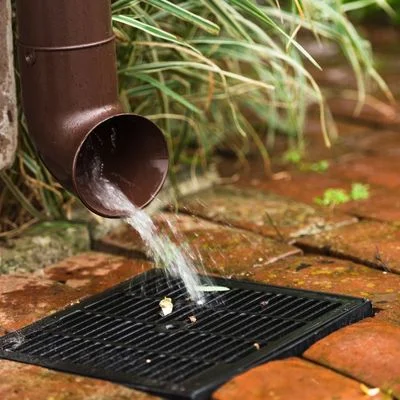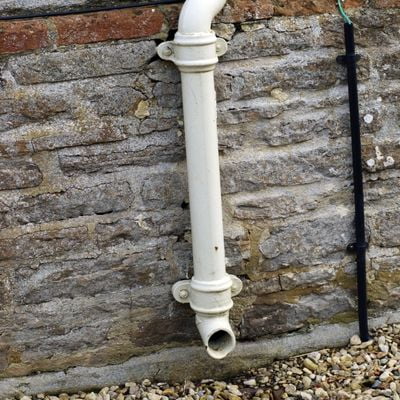No products in the basket.
Blog
Is a Combined System of Drainage Right for Your Property?
All houses built in the modern era should have separate drainage systems for both rainwater and wastewater, and if you are using the incorrect connections, it may contribute to water pollution!
A lot of houses built after the 70’s tend to have separate drainage systems for the disposal of rainwater and wastewater which go to a responsible disposal point. Nonetheless, on occasions where a property is old and outdated or has been renovated by a not-so trustworthy drainage engineer or plumber, there is a pretty strong chance that there will have been some wrong connections made which may lead to pollution problems.
In this blog we will go over some worthwhile points that are worth knowing about drainage connections, combined drainage systems and everything in between.
Is there any difference between rainwater and wastewater?
In the world of drainage, rainwater is water that is collected from places that naturally hold it as a result of heavy downfall. For example, if you have water that runs off from the roof or is collected on your driveway, it is untreated water, so this comes under the category of rainwater. Rainwater is more than safe to send back to the environment so long that it hasn’t landed on a contaminated site, such as places where there may be hazardous spills on the ground.
As you may have guessed by now, wastewater comes from drains and internalities in your house, such as washing machines, showers, baths, basins and sinks. The water that comes from your toilets and grey water from your sink is known as foul water. This type of water is not safe to be sent back into the environment, so therefore, it must be transported to treatment stations as it is essentially contaminated water.
The important differences between a combined system of drainage and a separate drainage system.
The first drainage systems implemented in the United Kingdom during the early 1900’s were designed with the primary intention of moving all kinds of water away from peoples houses and industrial properties. This aided in dealing with certain health threats. However, there was no thought about where the water was going and the other kinds of effects that this might have. This is known as a combined drainage system, because all of the water, regardless of its type, drains the water directly into somewhere like a local river or stream.
As time moved on, the need for separate drainage systems became more and more important. This is because, over time, the population increases and there is therefore a higher risk of having wastewater enter into water streams that people may be drinking out of. This means that as time progressed, combining a drain system was no longer a good enough way to deal with more wastewater than ever. This means that the different approach of having a separate underground drainage system that operated in a fashion that allowed wastewater to go directly towards a treatment plant and the rainwater to be passed on to the nearest river or stream had a massive positive effect towards the environment. As of recent years, 50% of homes have separate water drainage systems.
So the essential difference is that a combined drainage system doesn’t separate rainwater and wastewater, whereas a separate drainage system does.
What happens if you have an older property with a combined drain system?
Don’t worry if you are reading this and thinking to yourself that you will need to get a whole new system in place if you are living in a property that was built before the 70’s. You won’t have to replace anything or worry about where the water is draining to.
Some properties that were built after the 70s may still drain into combined systems due to there being old pipelines in that area that your mixed drains are connected to. In this case, then you should still operate your systems as though you are on a more modern separate system, compared to a combined drains system.
Why may your home be polluting your local water?
A common problem that many people are not aware of is that the wastewater from their home is running into their rainwater drain, which could then potentially run into rivers and damage protected environmental areas. Examples of areas being affected can include beaches and rivers etc.
The more people that move into their own houses leads to there being a growing population of people who seek to undertake their own work on their houses, which means that the wrong combination of drains being installed is not uncommon. Most people are unaware that different kinds of drains transport water to different areas, so it is worth double checking with a drainage engineer to ensure that your pipework isn’t transporting polluted water from machinery in somewhere like your kitchen down to the local river. It is worth mentioning that one way to identify a combined system is through there being wastewater pipes that are connected to the same guttering setup as well as running into the same gully.
How will you know if you are using the correct connections for your drainage?
Near enough every property has a report which will help you to identify what kind of drainage pipe system it uses. However, it is not uncommon to not have this, in which case a plumber will be able to check your connections and ensure that they are safe and adequate. More often than not, your local water supplier will be able to tell you what kind of drainage system your property will be using based on your area, because they will have a good idea of what type of system was originally installed upon the house being built. The report may come back and say that you, in fact, already have a separate drain system in place, but we would still recommend getting the connections checked properly just for good measure!
So what does it actually mean to have your drainage set up in a separate way? Well, essentially, the commonly used 68mm downpipe that is connected to your guttering system which is in place to collect the rainwater and run off water from the roof should send it’s water into a separate underground drainage bottle gully to the waterpipes which should have their own gully. With this in my mind, if two pipes are running down into the same grid, it is a clear indication that something is not right and that you may need to get your system looked at if you want to minimise the toxins being pushed into protected areas.
Should you take it upon yourself to check your drainage connections?
As with most things related to owning a home, if there is something that is of concern to you, then it is your responsibility to get that checked and corrected if it is wrong. As mentioned previously in this article, it would be best to get a qualified plumber to undertake any work to make sure that it definitely gets done to an adequate standard. On the other hand, if you are renting a property, it is your right to point this out to your landlord and have them sort it for you.
So why be so concerned about whether you have a combined drainage system or a separate drainage system?
Drainage is never something that crosses your mind every day. However, by identifying a few simple faults in how the system is set up, you will be able to significantly reduce the amount of pollution and waste spilled out of your property.
If you have any queries about anything in this blog post please don’t hesitate to get in contact with us and we can do our best to help and advise you where we can!
Shop Underground drainage:













